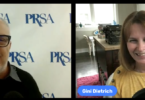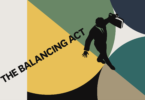Editor’s note: The following is a guest post from Roger Dooley, a writer, speaker and researcher in marketing, and in particular the use of neuroscience and behavioral research.
I tend to be more of a consumer of public relations than a creator. I’ve done my share of press releases and media interviews, but I’m bombarded with many times that quantity of public relations messages — news releases, book review requests, story suggestions and so on. Sadly, most of what I see is ineffective.
Want to craft a public relations message that engages the recipient? Use our understanding of the human brain to create that message. While there are many ways to play to brains of those readers, likely the most effective single technique is to tell a story.
Stories have a special appeal to human brains. The ability to process information from fellow humans was an important evolutionary advantage to our early ancestors. While they learned from direct experience like other creatures, they could also learn from the experiences of others. Whether this involved avoiding the lair of a dangerous animal, or locating a source of food, being able to readily absorb this second-hand information made these early communicators far more efficient than other species.
This preference for stories affects the way we process information, even in today’s high-tech environment. You can read statistics about the reliability of Toyota cars in reliable publications like Consumer Reports, but if your neighbor recounts a detailed horror story about a transmission problem and how he made three trips to the dealer to get it fixed, that one story will outweigh all the numeric data.
Our brains learn far better from specific examples than abstract information.
Brain scans show the potency of stories, even when they are merely text on a page. In a post about the efficacy of stories in advertising, I describe research showing that stories actually activate the parts of our brain related to the content. If we read about pedaling a bicycle up a hill, our brain will mimic that activity even if our legs remain still.
Never underestimate the power of text when it tells a story. One of the top-rated ads of this year’s Super Bowl was Google’s “Parisian Love” commercial. As I described in my post, “Power of Text,” there are no actors or CGI animation, no cute animals, no zooming cars, nothing but a series of words typed into a search boxes and their search results. A “neuro-engagement” study using EEG brain scans placed the Google ad in the top-five, ahead of almost all of the big-budget productions. This ad’s secret of success was that it told a compelling story.
One remarkable characteristic of spoken stories is that they actually synchronize the brains of the speaker and listener. If the listener is following the speaker’s story, his brain activity will become almost synchronous with that of the speaker.
In short, whether your goal is to inform or persuade, you first have to connect with your audience by engaging their brains. Statistics and dry facts won’t do that. There’s simply no better way to initiate and maintain that engagement than to present your message in the form of a story.
Roger Dooley is the primary author at Neuromarketing, and founder of Dooley Direct LLC, a marketing consultancy. Follow him on Twitter.






